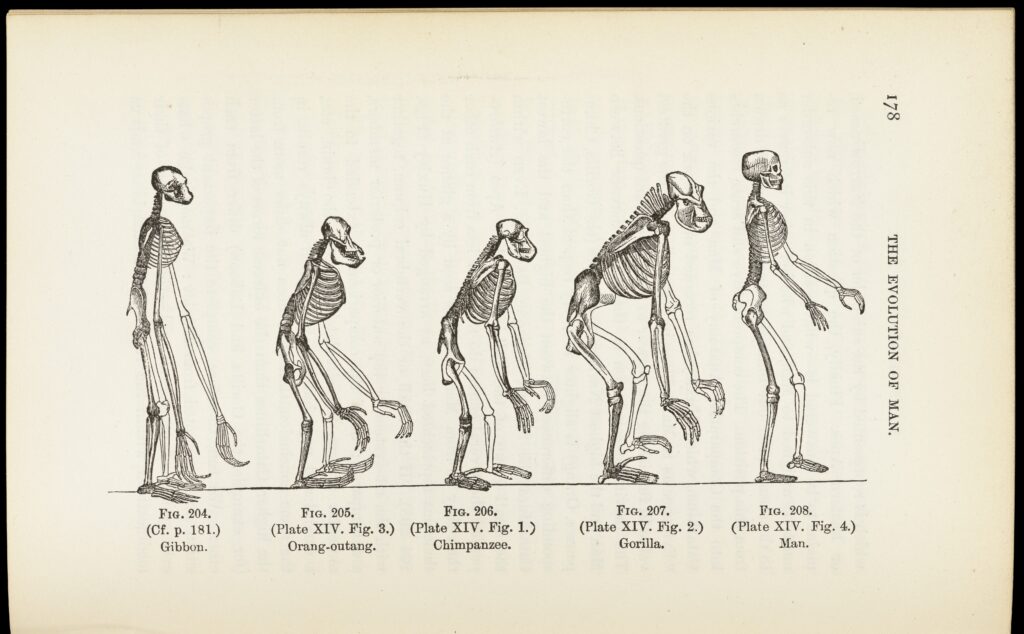From the Sumerians and Mesopotamians to the Middle East, on to ancient Egypt, ancient Greece, ancient Europe, Africa, and India, and eventually the Americas, the concept of the evil eye refers to the belief that one person may cause harm or misfortune to another through their evil gaze or evil glance. Intense jealousy and envy are perceived as potent forces that could bring about illness, calamity, or even death when concentrated into a single venomous ray of vindictive intent. Various cultures believed the evil eye was attributable to humans, animals, demons, or gods, and that an evil spell could be cast on anything or anyone looked upon by the enchanter. An affected individual may not suspect the evil eye until disaster befalls them, and sometimes a person might even cast the evil eye unintentionally.
Avoiding the Evil Eye
The dread of such dark power has led people to take measures to protect themselves, their families, and their belongings from the evil eye’s perceived harmful effects. These items are intended to ward off bad luck and negative energy associated with the curse of the evil eye.
Historically
Eye cups, drinking vessels produced in ancient Greece over 2,500 years ago, were thought to act as a symbol of protection. When a person drank from their eye cup, a set of eyes painted on the vessel would stare out at everyone around them, causing any possible evil eye to bounce back onto the sender. Older still were Phoenician clay beads, dating back 3,500 years ago. They were shaped like eyes that stared day and night at whoever wore them. Later, with the invention of glass, blue evil-eye glass amulets proliferated.
Today
Today, when someone is acting menacingly towards us, we might hold up a hand, or even two hands, in protest, or perhaps a silent plea for mercy. In ancient times, a hand was also considered a worthy charm to ward off the evil eye. Today, the hamsa (“five” in Arabic, representing the five fingers of a hand), also called the “Hand of Fatima” in Islam, and the “Hand of Mary” among Middle Eastern Christians, is easily recognizable as an amulet in the shape of an open hand with an unwinking eye gazing from its palm.
Another common evil eye amulet is the nazar (Arabic for “sight,” “surveillance,” or “attention”), shaped like an eye with four concentric circles in white, light blue, and dark blue. With its powerful blue gaze sweeping all around it, any evil eye cast in secret or inadvertently is thought to be averted. Such evil eye jewelry is often given as gifts, hung decoratively in windows, doorways, and rearview mirrors, carried in pockets and pocketbooks, or worn as jewelry.
Is the Evil Eye Mentioned in the Bible?
The specific term “evil eye,” as well as references to evil eye beliefs and practices, are found in both the Old and New Testaments. Concern about the evil eye is also attested in the Dead Sea Scrolls as well as early rabbinic and Christian writings. Scholars have debated whether the biblical mentions of the evil eye affirm that it is a real magical power, or whether it is simply a metaphor for feelings of jealousy or stinginess.
Take, for example, the contrast between the “good eye” of a generous person and the “evil eye” of a greedy person in these verses from Proverbs:
He who has a good eye shall be blessed, for he shares his bread with the poor. – Proverbs 22:9
A man with an evil eye hastens after wealth, and does not know that poverty will come upon him. – Proverbs 28:22
Are the good and evil eyes figurative expressions of different attitudes one can hold concerning wealth and charity? Or are these verses evidence for the belief that a person’s intent and glance, when combined, may have an impact beyond their words and physical actions?
The evil eye of Hagar
A similar ambiguity presents itself in the story of Sarai and Hagar in Genesis 16. Having borne no sons for Abram (later renamed Abraham), Sarai offers him her Egyptian slave Hagar. Abram sleeps with Hagar and she becomes pregnant. Genesis 16:4b reads:
When she [Hagar] knew she was pregnant, she began to despise her mistress [Sarai] (NIV)
But the original Hebrew for “despise” literally means “to curse with the eyes.” It is possible to translate the verse in the opposite direction: that Sarai cast the evil eye on Hagar. In the next verse, Sarai then projects her own envy on Hagar. Sarai accuses her of practicing the evil eye and uses a curse formula to pass the magical harm onto Abram:
And Sarai said to Abram, “May the wrong done to me be on you!: – Genesis 16:5a (ESV)
Jesus and the Evil Eye
Jesus himself refers to the evil eye on a few occasions in the gospels. One such passage is from the Sermon on the Mount:
“The eye is the lamp of the body. So if your eye is healthy, your whole body will be full of light, but if your eye is unhealthy, your whole body will be full of darkness. If, then, the light in you is darkness, how great is the darkness!” – Matthew 6:22-23 (NRSVUE)
The words “healthy” and “unhealthy” can better be translated as “generous” and “evil.” This teaching about the eye sits in between Jesus’ instruction to store up treasure in heaven, rather than earth, and his warning that a person cannot serve God and money at the same time. Jesus, just like the wisdom sayings in Proverbs, associates a well-functioning eye with generosity and a bad or evil eye with greed. These ideas could also be applied to the religious authority figures during Jesus’ time who valued their own good fortune over a deeper relationship with God.
Other references to the evil eye include Deuteronomy 15:9, Mark 7:22, Matthew 20:15, and Galatians 3:1.
Is the Evil Eye Real?
Even today, many people guard themselves against the evil eye. One study estimated that 40% of the global population believes in its power. This popular belief percentage includes Christians in Greece, Ethiopia, and Spanish-speaking countries.
“New Age” practitioners in the Western world hold similar views about the supernatural power of intention. In 2006, the bestselling book The Secret by Rhonda Byrne popularized the alleged “law of attraction.” She holds that positive energy can manifest positive outcomes in a person’s life, while negative energy brings negative outcomes.
Christian Responses
There are a range of possible Christian responses to belief in the evil eye. Most readers will likely view it as a superstition, and with good reason. There is no scientific evidence for the power of a malevolent stare. The long history of the evil eye may have served as a useful explanation when we lacked understanding about verifiable causes of illness such as infection and malnutrition. The evil eye seems to be a cultural tradition rather than a genuine threat by evil forces.
Moreover, the fear of the evil eye may foster suspicion and mistrust among communities. Different beliefs may cause people to attribute misfortunes or hardships to the ill intentions and evil glare of others. This mindset can create division and strain relationships, hindering the cultivation of love, unity, and empathy that Christianity promotes.
But, with some exceptions, Christians also affirm that the world is influenced by supernatural forces like angels, demons, and the Holy Spirit, as taught by Jesus and the biblical writers. According to such a perspective, our attitudes and intentions may have an impact through such actions as prayer or giving in to temptation. So, some interpret the evil eye as a manifestation of spiritual warfare. They believe that darker spiritual forces can influence negative intentions and envy. This interpretation aligns with the New Testament’s teachings on demonic powers and the importance of putting on the whole armor of God to stand against evil (cf. Ephesians 6:10-18).
Still, others will consider the evil eye a useful metaphor for the dangers of focusing on material possessions or harboring jealousy. From this perspective, the shape of an eye becomes a cautionary symbol. It reminds believers to cultivate contentment, gratitude, and a Christ-centered perspective.
Practicing a “Good Eye”
Viewed as metaphorical or metaphysical, the concept of the evil eye aligns with personal life. Envy, jealousy, and negative intentions can have detrimental effects on individuals and communities. The Bible cautions against holding grudges, seeking revenge, or coveting what belongs to others. These attitudes can lead to harm and discord. As Paul writes to the Ephesians:
Put away from you all bitterness and wrath and anger and wrangling and slander, together with all malice – Ephesians 4:31 (NRSVUE)
The writer of Hebrews added,
See to it that no one fails to obtain the grace of God, that no root of bitterness springs up and causes trouble and through it many become defiled – Hebrews 12:15
The antidote to these attitudes is the cultivation of love. The love of neighbor and oneself is central to Jesus’ message (Mark 12:31 and Matthew 22:39). Paul also encourages believers to love each other and to love those around them. This is the expression of their faith in Christ (cf 1 Corinthians 13, Romans 14-15). This emphasizes the importance of treating others with kindness, compassion, and empathy, rather than harboring envy or negative intentions.
Paul also emphasized the role of the Holy Spirit in guiding and empowering believers. Galatians 5:22-23 lists the fruit of the Spirit, which includes love, joy, peace, patience, kindness, goodness, faithfulness, gentleness, and self-control. These qualities counteract the negative intentions often associated with the evil eye. There is no need for talismans or incantations, special hand motions, protective symbols, or symbolic jewelry. The Spirit of Christ who indwells every believer is far more powerful than any evil energy or ominous glare.
Habits against the evil eye
If you want to avoid being a purveyor of the “evil eye,” then consider adopting this set of habits:
- Cultivate a Christ-Centered Mindset: Philippians 4:8 instructs believers to focus on whatever is true, noble, right, pure, lovely, admirable, excellent, and praiseworthy. By redirecting our thoughts toward Christ-like virtues, Christians can maintain a positive and spiritually enriching mindset.
- Practice Gratitude and Contentment: Do not compare yourself to others. Rather, practice gratitude for the blessings in both your life and the lives of others. Being content with what God has provided helps prevent feelings of jealousy or envy.
- Set Healthy Boundaries: Establishing healthy boundaries and limiting exposure to negative influences can safeguard against the harmful effects of jealousy or envy.
- Pray for God’s Protection: Regularly pray for God’s protection over our lives, families, and relationships. Trust in God’s loving care to shield you from harm and negative intentions.
- Seek Discernment: Develop spiritual discernment by regularly studying the Bible and seeking God’s guidance through the illumination of the Holy Spirit. Discernment enables believers to identify and reject harmful beliefs or practices.
- Practice Forgiveness: Jesus emphasizes the significance of forgiveness in the Lord’s Prayer (Matthew 6:12). He teaches that we must forgive others if we want to receive forgiveness from God. Holding grudges or seeking harm in response to perceived negative intentions only perpetuates negativity and harm. Choosing forgiveness leads to healing, reconciliation, and a heart liberated from the burden of resentment.
- Engage in Acts of Love and Kindness: Acts of love and kindness not only align with Christian values but also create a positive and compassionate atmosphere, reducing the likelihood of harboring negative intentions.
Conclusion
Ultimately, Christians can find security in their relationship with God. Knowing that God’s love is more potent than any evil force. By maintaining a steadfast faith, trusting in God’s providence, and seeking God’s guidance through prayer, we can protect our hearts and minds from unnecessary anxiety and fears of spiritual harm. By focusing on our relationship with God, we replace our worry with the hope, peace, and assurance found in Christ.
What do you think? Please share your thoughts below.
Too often, people answer faith questions with dogmatic certitude and neglect the historic diversity and complexity of Christian ideas. The Questions Project is a resource that responds to questions about faith, history, and scripture in a way that honors the historic diversity and complexity of Christian thought. But, this is a work in process and we need your help. Please provide feedback. We are particularly interested in knowing what we have missed and how we can improve our responses. Please keep all comments kind or risk deletion.







